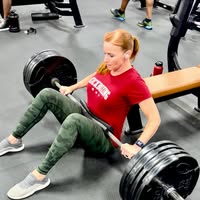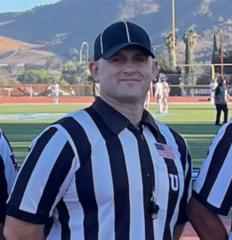
Write something
The Hidden Switch: Why Long COVID Lingers and How to Restart the System Part 3
Mitochondria sit at the heart of long COVID, and their dysfunction explains why symptoms cut across so many systems. These organelles are more than energy factories; they are cellular sentinels that decide whether the body is in growth, defense, or repair mode. During acute infection, mitochondria deliberately shut down high-output energy production and switch into alarm signaling. They fragment, release ROS, and send out distress molecules to coordinate immune activity. In long COVID, that alarm mode never fully resets. Instead of resuming normal energy output, mitochondria remain locked in a fragmented, stressed state that drains vitality. One of the hallmarks is fission dominance. Normally, mitochondria exist in a dynamic balance between fusion and fission. Fusion allows mitochondria to share contents, repair damage, and optimize energy efficiency. Fission is used to isolate damaged segments and remove them through mitophagy. In long haulers, oxidative stress and cardiolipin damage tip the scale toward constant fission. The result is a population of small, inefficient mitochondria that can’t produce steady ATP. It is like breaking a power plant into dozens of tiny generators that each sputter and fail rather than pooling resources into one stable grid. Cardiolipin, the signature phospholipid of the inner mitochondrial membrane, plays a central role here. It stabilizes respiratory chain complexes and maintains cristae structure where ATP synthesis occurs. Viral infections, including COVID, generate excessive ROS that oxidize cardiolipin. Once cardiolipin is oxidized, it loses its ability to anchor electron transport complexes, causing electron leaks and more oxidative stress. This vicious cycle locks mitochondria into dysfunction. Imagine scaffolding inside a factory collapsing machines keep running but with sparks flying and energy leaking at every corner. The downstream effect is impaired electron transport. Complex I and Complex II become bottlenecks, leading to reduced oxidative phosphorylation and increased reliance on glycolysis. This metabolic shift produces excess lactate, explaining the exercise intolerance and post-exertional malaise many long haulers experience. Even mild activity can push lactate high because mitochondria can’t clear the workload efficiently. Patients feel as if their muscles are flooded with acid after the smallest effort, and in truth, their energy systems are behaving like an undertrained athlete running on fumes.
Part 5 — The FGF21 Playbook
We’ve talked about what FGF21 is, when it rises, how it changes your mitochondria, and what science has shown us. Now let’s put it all together into something you can actually use. FGF21 isn’t a hormone you want blasting all the time. It works like a reset button short pulses of it help your mitochondria adapt and stay flexible. The key is to create the right contrast: some days that push it high, and other days that let it fall so your body stays sensitive. Here are the main levers you can pull: 1. Strategic sugar or carb surges. On training days, especially when you’re lifting hard or doing intervals, a surge of carbs with very low fat can spike FGF21. This is like revving your engine on purpose—it makes the mitochondria split into more units (fission) to keep up with demand. 2. Low-calorie or fasting days. On recovery or rest days, pulling calories back especially carbs and protein helps mitochondria repair (fusion) and recycle damaged parts (mitophagy). This is like parking the car in the shop so it can get tuned up. 3. Exercise. Whether it’s cardio, strength training, or even just a brisk walk, exercise is a universal trigger for FGF21. It’s like the master switch that makes sure your cells are ready to handle whatever fuel you throw at them. 4. Environmental stressors. Cold showers, sauna, or even just walking outside in the winter can bump up FGF21. These little stressors teach your mitochondria to stay resilient. 5. Support stack. Peptides like MOTS-c or SS-31, nutrients like CoQ10 and carnitine, and lifestyle choices like good sleep all improve how your body responds to FGF21. Think of these as the supporting cast that make the conductor’s job easier. Sample Weekly Calendar (200-lb man, 4 training days) Monday (Training – Fission Day)High carbs, low fat, lean protein. Example: fruit, juices, honey during the day; lean chicken and veggies at night. Tuesday (Rest – Fusion Day)Low calorie, higher fat, lots of vegetables. Example: salad with salmon and olive oil, roasted broccoli, eggs.
The Two Numbers That Reveal Whether You’re Recovering or Breaking Down
When people talk about “redox,” they often imagine a simple on/off switch: too much oxidation is bad, too little is good, and antioxidants somehow fix everything. But redox isn’t a static level. It is a movement, a rhythm, a pulse. It is the cell’s equivalent of breathing: electrons are passed, accepted, handed off, and recycled in a constant dance that allows mitochondria to do the one thing that keeps everything else alive create a stable flow of energy without generating destructive chaos. When that movement slows or stops, the body becomes metabolically stuck. It can’t shift gears. It can’t adapt. It can’t repair. And one of the simplest, most reliable ways to know whether that electron pulse is moving or jammed is something most people overlook entirely: your resting lactate and your resting heart-rate variability. These two markers act like a window into how well mitochondria are moving electrons through the respiratory chain and how much stress your nervous system is carrying while trying to compensate. To understand this, it helps to picture metabolism the way you might imagine traffic moving through a city. If everything is functioning well, cars move smoothly through intersections. Some lanes slow down at certain times, others accelerate, but the rhythm remains fluid. In the mitochondria, electrons are the cars, and the electron transport chain is the road network guiding them from one stop to the next. When the road ahead is blocked because of infection, stress, injury, hypoxia, toxic burden, inflammation, or even intense training the cars have nowhere to go. They pile up. The system becomes backed up. In cellular terms, that backup shows up as elevated NADH relative to NAD+, sluggish electron transfer, a reduced ability to pass electrons to oxygen, and an emergency diversion of energy processing toward lactate production because it’s the only exit ramp left open. This is why elevated resting lactate is so revealing. A healthy cell at rest does not need to rely heavily on lactate production. Lactate is not the enemy in fact, it’s a valuable metabolic currency during exercise but at rest, consistently elevated lactate is like seeing rush-hour gridlock at midnight. Something is blocking the flow. And when lactate stays elevated several mornings in a row, it often means the mitochondria can’t clear electrons efficiently, so cells are forced to rely on the “quick and dirty” energy pathway instead of the high-efficiency mitochondrial one. The body becomes stuck in a pseudo-hypoxic state where the cell is not lacking oxygen, but from the mitochondria’s perspective, it might as well be.
Burnout Isn’t in Your Head—It’s in Your Cells: The Science of Overwhelm Part 3
The path out of overwhelm and burnout begins with structure, not speed. Trying to solve it with a flood of interventions only risks adding more noise to a system already overloaded. The first and most essential layer is lifestyle, because the way we sleep, move, and nourish ourselves determines the baseline rhythm of every other pathway. Consistent circadian anchors waking and sleeping at set times, exposing the eyes to morning light, and limiting late-night stimulation reset the body’s clock. Movement becomes medicine when applied with precision: zone 2 cardio restores mitochondrial density, strength training builds structural resilience, and mobility work keeps connective tissues supple. Recovery practices like deep breathing, meditation, or HRV-guided rest reintroduce parasympathetic balance, reminding the nervous system that it does not always need to be in fight-or-flight mode. These may sound simple, but they are the scaffolding that supports everything else. Nutrition then provides the raw materials to repair what stress has broken down. Adequate protein feeds neurotransmitter synthesis and tissue rebuilding. Magnesium, B-vitamins, and trace minerals restore enzyme function across energy metabolism. Fats like omega-3s, odd-chain fatty acids such as C15, and phospholipids like plasmalogens rebuild membranes that have been oxidized and thinned by stress. Polyphenols and plant compounds act as subtle signalers, quieting inflammation while activating pathways like NRF2 and AMPK. Even ketone esters or exogenous ketones can provide a clean energy substrate to bypass broken glucose metabolism during recovery phases. Peptides serve as precision repair signals layered on top of this foundation. BPC-157 and TB4 guide tissue regeneration and angiogenesis, creating the microenvironments needed for recovery. SS-31, also known as Elamipretide, stabilizes the mitochondrial membrane and repairs cristae integrity, directly reversing fragmentation. MOTS-c improves metabolic flexibility by rebalancing AMPK signaling, while Selank and Semax support cognitive clarity and emotional regulation under stress. Each of these is a small piece of molecular code, reminding the cell how to behave when it has forgotten under chronic overload.
Forget Calories Fat Loss Is a Symphony of Electrons, Enzymes, and Breath
Fat loss is one of those phrases that sounds simple eat less, move more but beneath the surface lies a molecular ballet that’s so intricate it borders on poetry. To really understand how fat leaves your body, you have to zoom in beyond the mirror, beyond the scale, all the way down to the molecules themselves. Fat loss isn’t burning; it’s transformation. It’s chemistry, communication, and coordination at the cellular level. Every drop of fat lost is a story of electrons, enzymes, and energy signals passing messages like runners in a relay race. Let’s start at the very beginning: the spark. Imagine you wake up and decide to go for a fasted morning walk. That first step is not just physical it’s molecular ignition. Movement sends a mechanical signal through muscle fibers that says, “Energy demand is rising.” Inside each muscle cell, this signal activates AMP-activated protein kinase, or AMPK. Think of AMPK as the body’s internal accountant. When it senses that the cellular energy balance is off too much AMP (spent energy) and not enough ATP (usable energy) it flips a switch from “store” to “spend.” AMPK begins turning off the enzymes that promote fat storage and turning on those that liberate energy. It tells fat cells to open their vaults. These vaults are made of triglycerides, which are three fatty acid chains attached to a glycerol backbone. To free energy, the bonds must be broken a process called lipolysis. Hormone-sensitive lipase (HSL) and adipose triglyceride lipase (ATGL) are the locksmiths here. They respond to signals from adrenaline and norepinephrine, which are released by the sympathetic nervous system when you start moving. These hormones dock onto beta-adrenergic receptors on fat cells, kicking off a cascade of cyclic AMP (cAMP) signaling. cAMP is like an internal text message that tells HSL: “Go to work.” Once the fatty acids are cleaved from glycerol, they’re released into the bloodstream, but they can’t just float around on their own they’re hydrophobic, meaning they repel water. So they hitch a ride on a protein taxi called albumin, which ferries them to tissues that can use them for energy, primarily muscle and liver. This is where the story gets electric literally.
1-30 of 52

skool.com/castore-built-to-adapt-7414
Where science meets results. Learn peptides, training, recovery & more. No ego, no fluff—just smarter bodies, better minds, built to adapt.
Powered by





